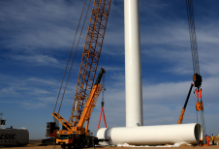




At present, in various fields of lifting operations, the popularity of lifting belts is no less than that of steel wire ropes. So what has made lifting belts reach this height?
When it comes to the rapid development of hoisting in recent years, it is worth mentioning its material. Friends who are familiar with hoisting belts should be very clear that hoisting belts use synthetic fiber materials, and these materials are mostly high-strength polyester, polypropylene or polyamide industrial filament. After processing, the tensile strength and elongation of the finished hoisting belts are close to or even reach the performance of steel wire ropes. Some people have doubts about this, isn't it still inferior to steel wire ropes? Let's analyze from another perspective.

Approaching the performance of a steel wire rope already indicates that it has the same level of lifting operations, and another advantage of a lifting belt is very obvious, which is its portability advantage. Under the same rated load, the weight of a lifting belt is only 20% of that of a steel wire rope, so its portability advantage is very obvious. This advantage becomes more apparent as the lifting specifications increase. Carrying and transporting large-sized steel wire ropes themselves is a difficult problem, and there are no such troubles with lifting belts.
From this perspective, it can be seen that the current lifting belts are not inferior to steel wire ropes, which is also the main reason why they are more popular in many lifting fields.